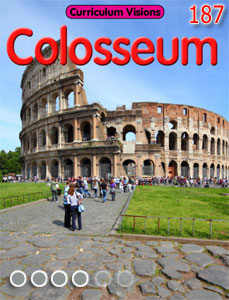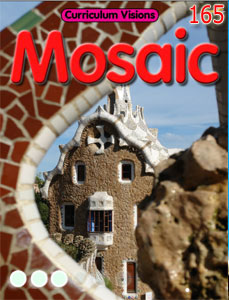The Colosseum in Rome is the largest Roman theatre-in-the-round. It is one of the world’s most famous buildings, and it is now two thousand years old.
The Colosseum is an amphitheatre (pronounced am-fi-theatre), meaning that there is seating all around. Notice that it is not like a theatre where there is a stage at one end. So before we look in detail at the Colosseum, let us first find out how amphitheatres came to be, and what their features are.
The word amphitheatre comes from the Greek, which means “ a place for viewing on both sides”. An amphitheatre is more like a modern stadium or an Ancient Greek stadion, an open-air place for games with seating in rows of benches all around the main stadium area, but rather than races, the amphitheatre was for entertainment.
The Ancient Greeks were the first people to build open-air places for entertainment. For their theatres they used natural hollows in hillsides. As a result, they were semi-circular, with the seating on the slopes of the hill and the stage on the open side. In this way the natural landscape was the backdrop to their plays and other kinds of entertainment.
The use of hillside hollows meant that many places simply could not have theatres. However, by Roman times, people were able to design free-standing theatres which could be put anywhere. They then extended the idea and built amphitheatres. An amphitheatre was designed for a different purpose to a theatre. It was a place of grand spectacles. The Romans also had long oval racetracks, which they called circuses, as well as the relatively small Greek-style athletics stadia (plural of stadion).
The great stone buildings that still stand today did not come about suddenly. Before them there were much smaller amphitheatres built from wood. They were intended to be temporary – more like a visiting showground. One used to be set up in the main Forum of Rome in the second century BC.
They were a great success and soon they became permanent buildings of brick and stone. The Romans built amphitheatres all over the empire, usually close to a large city. London had an amphitheatre, for example. All told, they put up over 200 of these gigantic buildings. They were always placed just outside the cities as they were simply too big to fit inside city walls.







